Stockton, New Jersey
2020 nuCamp T@B 320S * Jeep Wrangler
60,865 camping miles through the end of 2025
Categories
- All Categories
- 6 Cirrus Truck Campers
- 115 Dutchman and Vintage TaB Archives
- 5 Forum Rules
- 3 nüCamp & Forum Contacts
- 940 Air Conditioning & Refrigeration
- 2.5K Battery/Electrical & Solar
- 1.2K Camping & Travel
- 141 Events & News
- 219 Factory Comments
- 20 "FOR SALE" - New/Used Trailers
- 13 “FOR SALE" - Camping & Trailer Gear
- 2.3K Heating/Plumbing & Winterizing
- 132 Help - Computer & System
- 912 Introductions
- 404 Looking to purchase a trailer?
- 2.1K Modifications & Upgrades
- 1.4K Products and Accessories
- 389 Service/Maintenance & Recall Notices
- 37 Solo Travelers Hints & Tips
- 1 T@G Forum
- 71 Teardrop Groups & Links
- 71 Testimonials
- 902 Tips & Tricks
- 1.5K Trailer & Towing
- 27 Owners Manuals/PDF Files/Videos & Resources
- 61 üCamp Rally - News & Information
Yet Another Battery Upgrade
We store our T@B in a heated garage and don't camp in extreme cold, so the added indoor storage makes keeping our lithium batteries in the front outside storage box our preference. There are a few loose ends to finish up, but this upgrade to two 300Ah LiFePO4's is almost complete. I dragged it out of the garage between rain storms to do some testing. So far, so good.
Last winter I replaced the small factory rooftop solar panel with a 310W Sunflare panel that comes on 400 T@B's. I upgraded from the 75/10 Victron controller to a 100/30 to take advantage of the additional wattage. It worked considerably better, but the factory 10awg wire running from under the bench seat to the front box was resulting in too much voltage drop. My first thought was that I'd have to find a way to run heavier wire, but recently thought that I could simply move the controller closer to the battery. I'll need better sun for a good test, but the app voltage reading has me believing that it was a good move. Now I'm not seeing the different battery voltages from the two controllers.
For good or bad, I reuse the post type distribution blocks from my old setup instead of dedicated bus bars. While at it I switched from the SAE solar suitcase port on the side of our box to a 45 Amp PP15 Anderson connection. ..... Yes, there will be a cover over the batteries.
Before installing, I fully charge each battery independently. I'm currently running the air conditioner to completely drain them. Looks like that will take about eight hours. Next up will be recharging to see if the shunt confirms the 600Ah capacity.
So, any comments or critiques on this amateur electric work?
edit to mention that the battery boxes that the old 100Ah batteries were in were barely too small for the 300AH. At the base it was a good snug fit, but the taper and handles would keep the 300Ah from sliding all the way in. I ended up cutting the boxes about an inch up from the base and screwing that to the bottom of the truck box as a way to secure the battery from sliding. (see second picture)
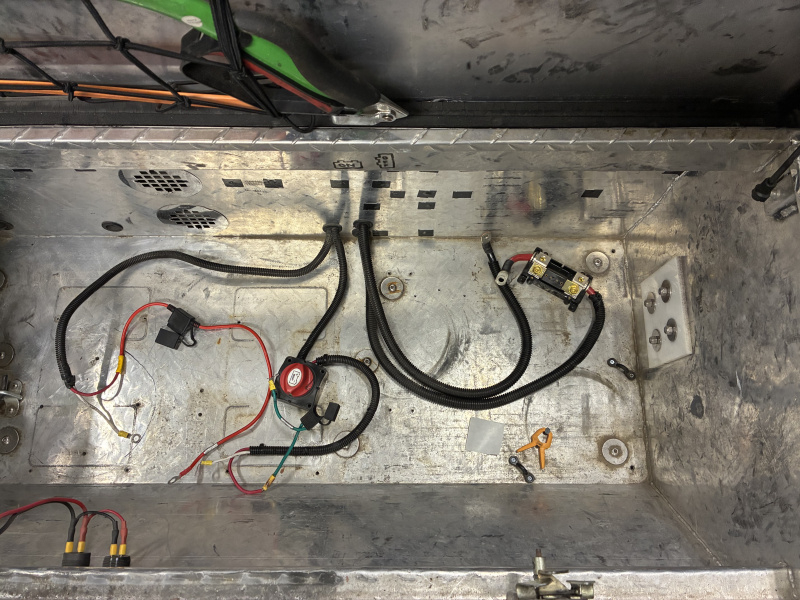
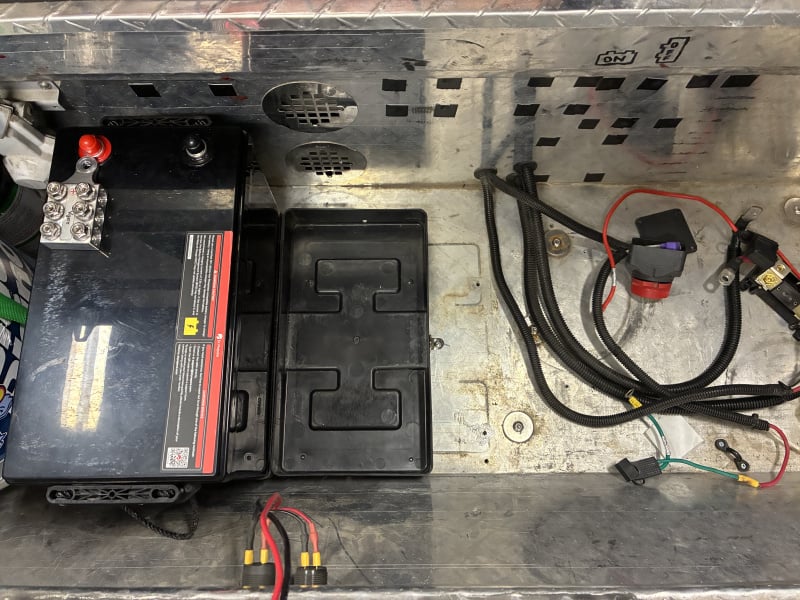
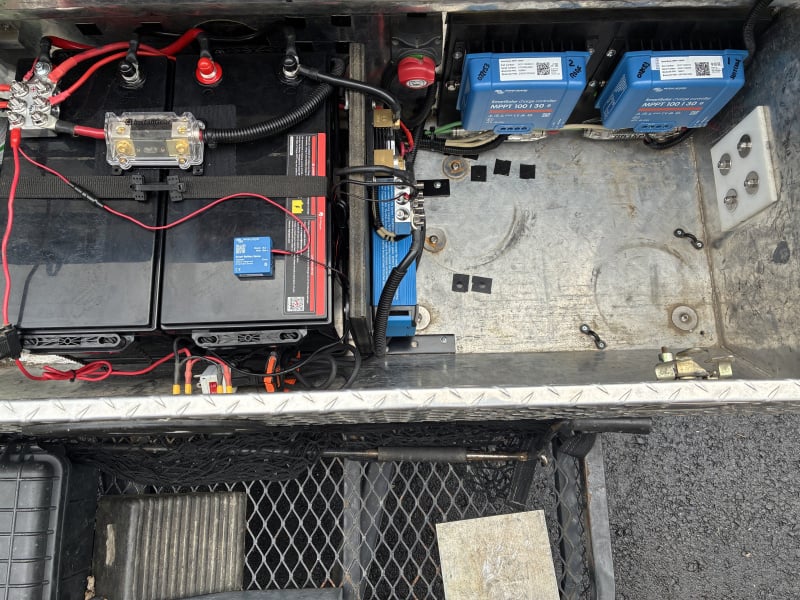
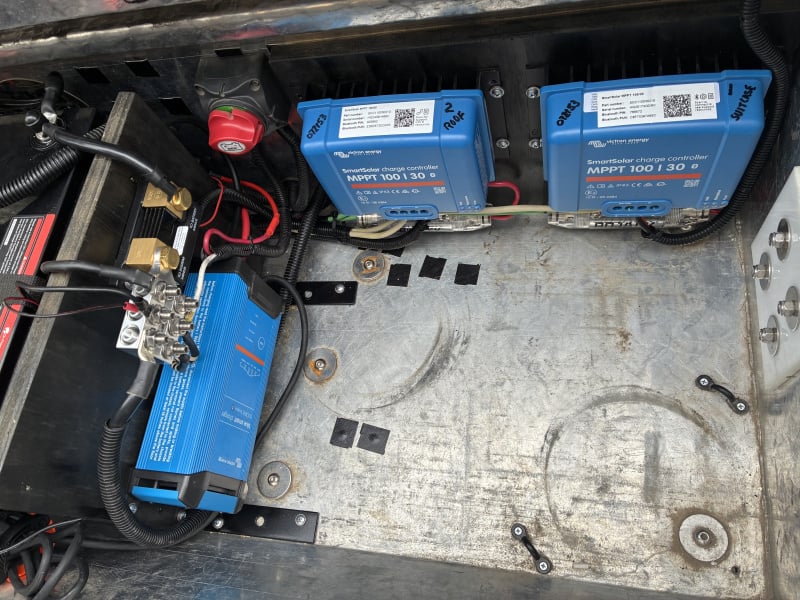
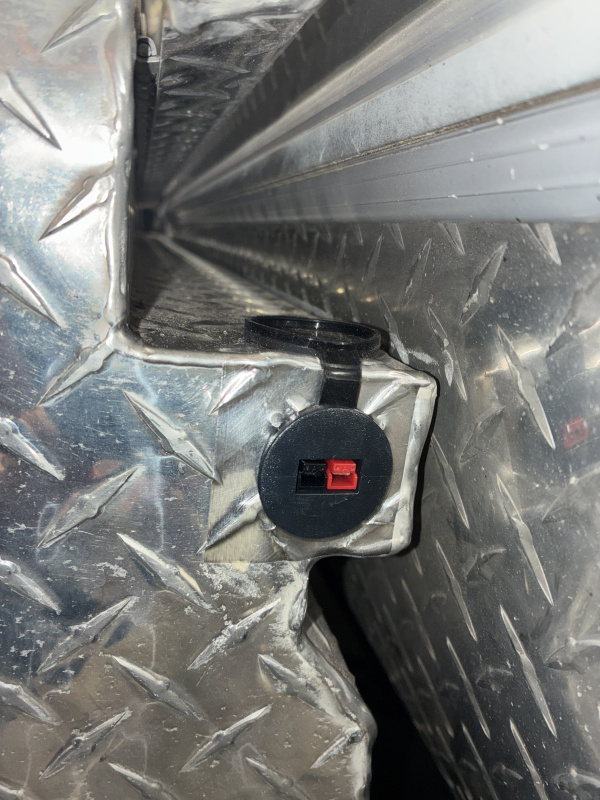
Last winter I replaced the small factory rooftop solar panel with a 310W Sunflare panel that comes on 400 T@B's. I upgraded from the 75/10 Victron controller to a 100/30 to take advantage of the additional wattage. It worked considerably better, but the factory 10awg wire running from under the bench seat to the front box was resulting in too much voltage drop. My first thought was that I'd have to find a way to run heavier wire, but recently thought that I could simply move the controller closer to the battery. I'll need better sun for a good test, but the app voltage reading has me believing that it was a good move. Now I'm not seeing the different battery voltages from the two controllers.
For good or bad, I reuse the post type distribution blocks from my old setup instead of dedicated bus bars. While at it I switched from the SAE solar suitcase port on the side of our box to a 45 Amp PP15 Anderson connection. ..... Yes, there will be a cover over the batteries.
Before installing, I fully charge each battery independently. I'm currently running the air conditioner to completely drain them. Looks like that will take about eight hours. Next up will be recharging to see if the shunt confirms the 600Ah capacity.
So, any comments or critiques on this amateur electric work?
edit to mention that the battery boxes that the old 100Ah batteries were in were barely too small for the 300AH. At the base it was a good snug fit, but the taper and handles would keep the 300Ah from sliding all the way in. I ended up cutting the boxes about an inch up from the base and screwing that to the bottom of the truck box as a way to secure the battery from sliding. (see second picture)






Comments
I think this install looks pretty good, but was wondering if the components are weather resistant. How much moisture gets in the tub when driving in a hard rain?
2019 T@B400 Boondock Lite "Todd"
I'm not thinking that @Grumpy_G was being grumpy. There are certainly things about my mod that have room for improvement. I was hoping for constructive criticism and opinions on what might be seriously unsafe.
2020 nuCamp T@B 320S * Jeep Wrangler
60,865 camping miles through the end of 2025
Overall I was happy to get the rated 600Ah, but was left wondering how much capacity it would shown if I had let the test continue. (Just not enough to risk future battery life.)
I'm now in the process of recharging the bank. Curious to see if the shunt will show the same 600Ah returned. Using a 30 amp charger, it will be a while before I know.
edit to add:
Left the 30amp Victron charger on for a couple of days in an attempt to balance the cells. At the end of this time the app showed about 610Ah had been sent to the batteries.
2020 nuCamp T@B 320S * Jeep Wrangler
60,865 camping miles through the end of 2025
Full discharge indeed reduces the lifetime of LiFePo batteries to less than half the number of cycles vs 80% discharge. However that is still 1000+ cycles doing 100% discharge, draining the battery to empty a few times does not significantly affect longevity.
"Travel is fatal to prejudice, bigotry and narrow-mindedness." Mark Twain, The Innocents Abroad, 1869
2020 nuCamp T@B 320S * Jeep Wrangler
60,865 camping miles through the end of 2025
Since this is an all Harvest Host trip, I didn’t load the rack on the back of our T@B with our usual camping gear. That’s almost 100 pounds that normally offsets tongue weight. I don’t notice any difference towing with the additional battery weight in the tongue box.
edit to add
Home after seven nights. Shunt says we're at 62%.
2020 nuCamp T@B 320S * Jeep Wrangler
60,865 camping miles through the end of 2025
2017 T@B S Max, Blue and Silver -- "The Blueb@rry"